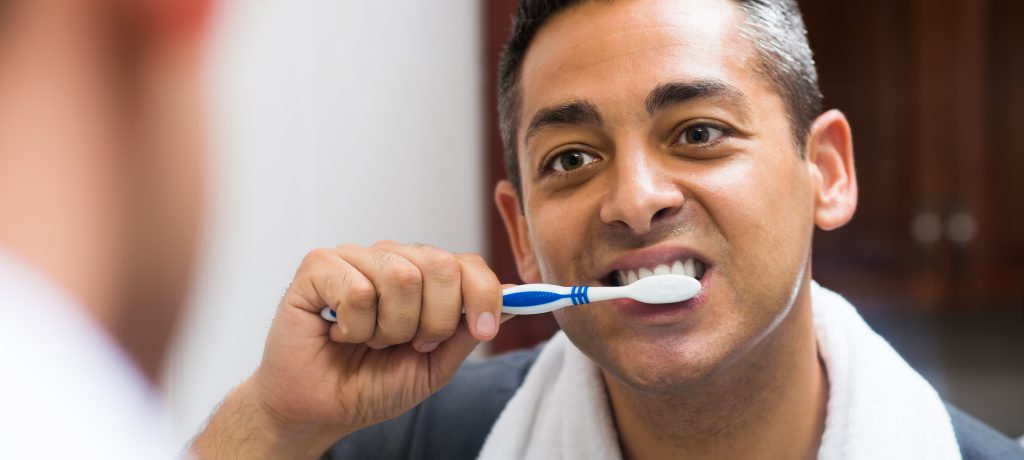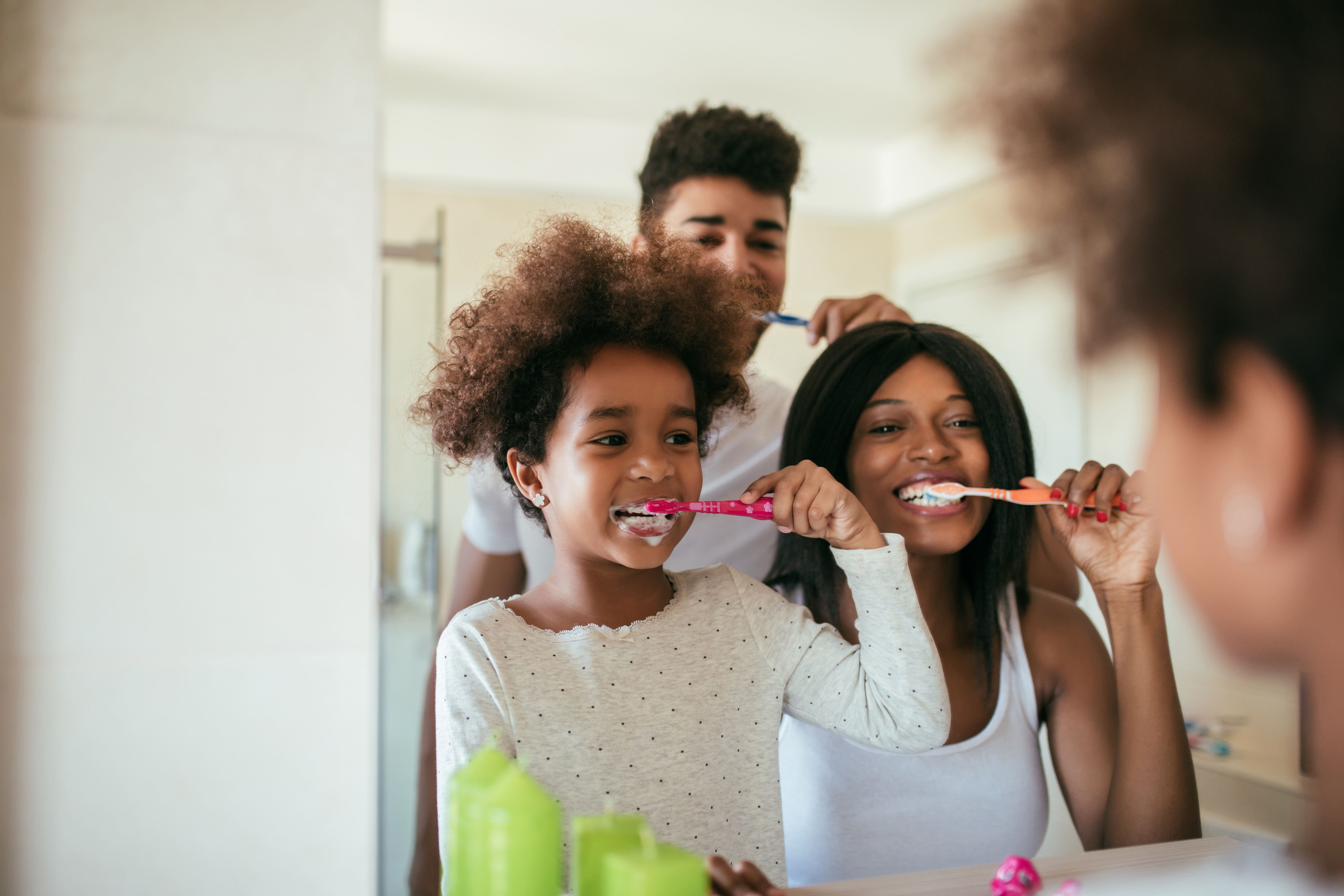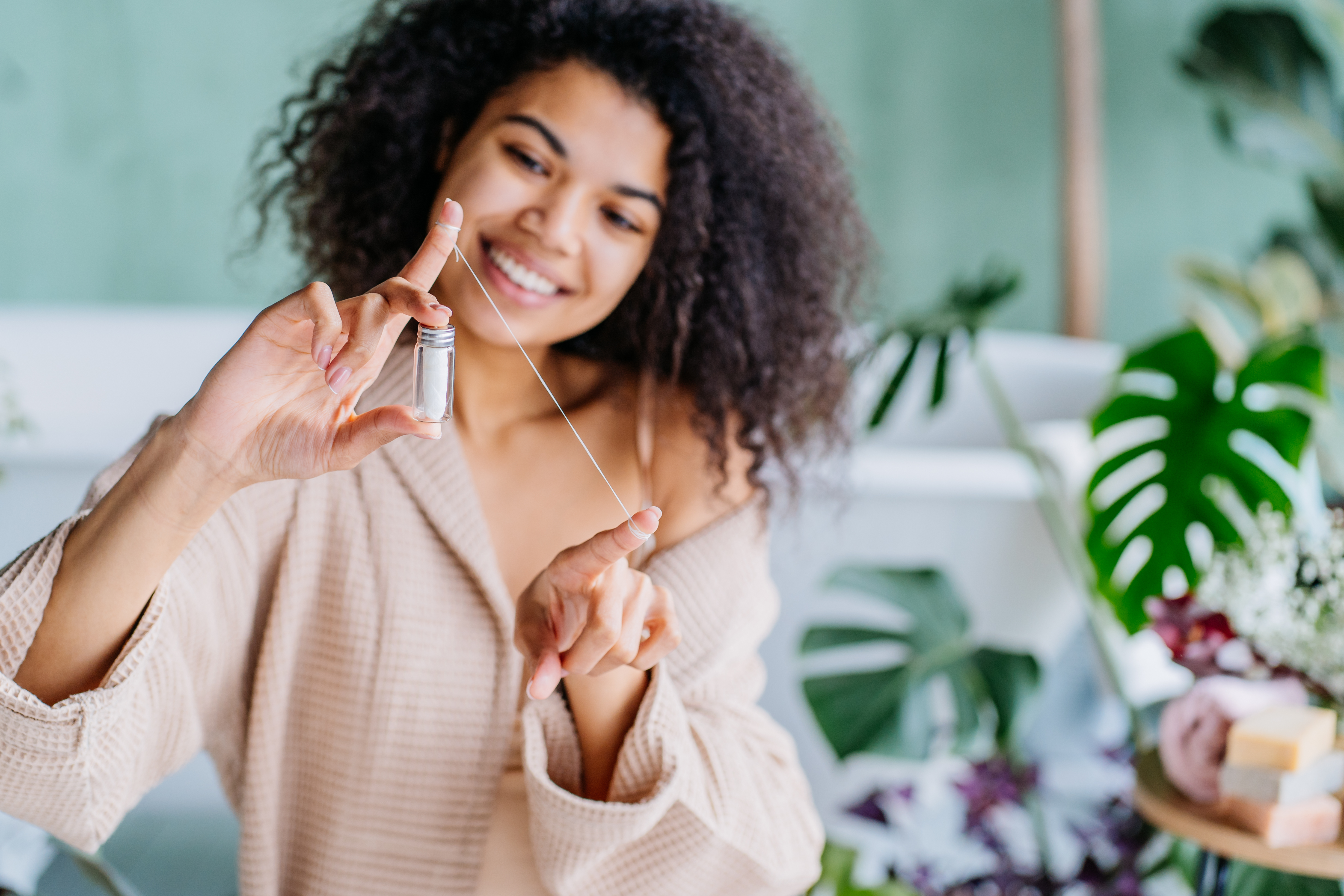Resource Library
Start Reading

Taking care of your teeth does more than prevent cavities. Your dental health is closely tied to your overall health and well-being. Following the best oral hygiene routine, and removing harmful bacteria from your teeth and gums at least twice a day reduces your risk of gum disease (periodontitis), which has been linked to heart disease and stroke.
Additionally, if you already have a chronic condition like diabetes, your risk of periodontal disease is already higher than average. That is why taking care of your teeth is a vital part of maintaining general health as well as oral health.
But what exactly is the best oral hygiene routine? The oral health care providers at Penn Dental Family Practice agree that it comes down to three basic steps: Brushing, flossing, and regular dental care.

If you are like most people, you already brush your teeth at least twice a day; once in the morning, and once before bed. That’s a great start, but are you brushing correctly? When you brush, how you brush, what you brush with, and how long you brush all make a difference in the effectiveness of your tooth-cleaning sessions.
To ensure that you remove as much bacteria and plaque from your teeth as possible, take care to clean all of the surfaces of your teeth — front, back, and chewing surfaces. The American Dental Association (ADA) recommends holding your toothbrush at a 45-degree angle, and using a gentle circular motion to clean each tooth.
Some dentists recommend starting in the back to ensure that your molars get enough attention. Get into the habit of following the same pattern every time you brush. For example, try starting on the upper right and working around the top teeth, then doing the same for the bottom teeth. This ensures that you don’t miss any sections.
It should take two minutes to brush your teeth, giving you 30 seconds for each quadrant. Set a timer if necessary until you get a sense of how long you should be cleaning your teeth. Also, don’t forget to brush your tongue! It can harbor bacteria that cause tooth decay and bad breath.
Although dentists used to recommend brushing after every meal, many agree that this may be too much. Brush twice a day, and give your mouth a good rinse with water after meals to help reduce bacteria. If you have to brush after eating or drinking, wait at least 30 minutes after enjoying soda, citrus, or other acidic foods to reduce the risk of damage to tooth surfaces.

Many dentists recommend using an electric toothbrush for a more thorough clean. If you have trouble brushing long enough, or you tend to put too much pressure on your teeth while brushing, an electric brush may be helpful. Most electric brushes also have built-in timers and alerts to help you brush better.
Regardless of whether you choose a manual or electric brush, the bristles are the most important feature. Choose a brush with soft or medium bristles. Brushes with hard bristles are too firm, and can scratch tooth enamel and gums.
Ask your dentist to recommend the best toothpaste for your dental concerns. At a minimum, choose a fluoride toothpaste with at least 1,000 parts per million, and the ADA Seal of Approval.
Flossing is the one step in the best oral hygiene routine that gets skipped more than the others. In fact, a 2017 study found that not only do people not floss regularly, they also don’t always tell the truth about their habits.
When you don’t floss your teeth, though, your dentist can tell — no matter how much you claim you clean in between your teeth. Flossing is vital to good oral health because it removes the plaque between teeth and under the gum line that brushing alone doesn’t eliminate. Getting rid of that bacteria helps prevent tooth decay and gum disease.

Whether you already floss, or need to add it to your daily oral care routine, being consistent and using the proper technique are the keys to getting the most from the habit. Most people only need to floss once per day. The ADA notes that it doesn’t matter when you do it, as long as you do it.
Most people find that it’s easiest to floss at the same time they brush. When you do, you can easily brush away any debris and bacteria that you loosen. You may wish to try different types of floss (i.e., waxed or unwaxed, dental tape, etc.) to find the one that works best for you and helps you maintain the habit.
The final step to the best oral hygiene routine is to see your dentist for a checkup every six months. Although these appointments include thorough cleanings, your dentist can also look for signs of concerns that need further attention or monitoring. As with most health concerns, the sooner you detect and manage issues like cavities, early gum disease, or other problems, the easier it is to fix them.
Although the best oral hygiene routine is simple, you may have additional questions about how to best care for your teeth. The dentists at Penn Dental are here to help and encourage you to make an appointment. We’re happy to answer all of your questions, and will help give you a healthy smile — and protect your overall health.
For even more information on maintaining oral health, download our comprehensive guide to finding the perfect dentist. The complimentary eBook, “Discover the Solution to Your Tooth Pain: How To Identify a Dentist Office You Can Trust” helps you find the perfect provider for your needs.
To make an appointment, or if you have questions, click here, or call us anytime at (215) 898-PDFP (7337).